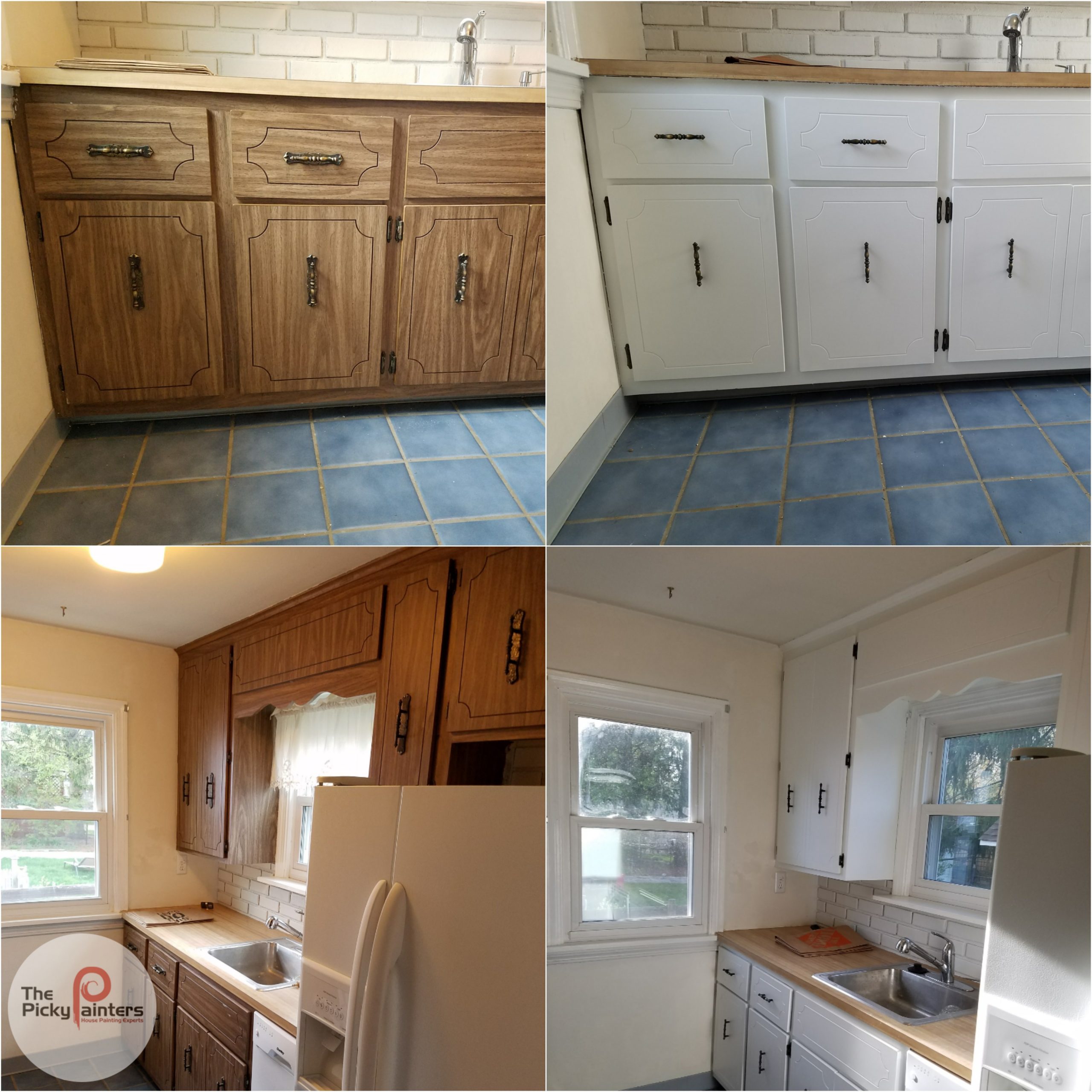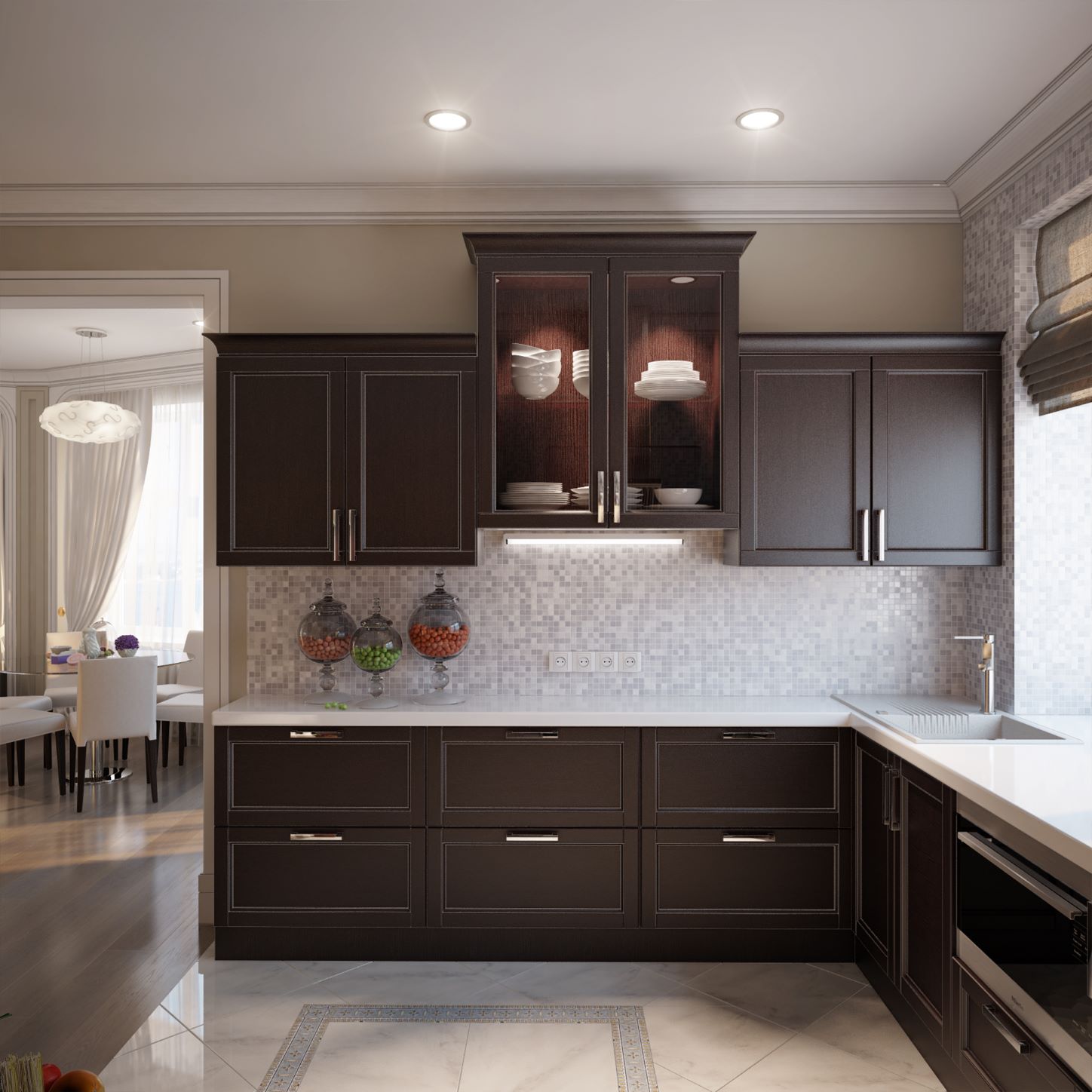Surface Preparation for Painting Laminate Cabinets: Can You Paint Over Laminate Cabinets

Painting laminate cabinets can dramatically update a kitchen’s aesthetic, but success hinges on meticulous surface preparation. A smooth, clean surface ensures optimal paint adhesion and a long-lasting, professional finish. Neglecting this crucial step often leads to peeling, chipping, and an overall unsatisfactory result. The following details the necessary procedures to properly prepare laminate cabinets for painting.
Cleaning Laminate Cabinets
Thorough cleaning is paramount before any sanding or painting commences. Laminate surfaces can accumulate grease, grime, and other contaminants that impede paint adhesion. Different cleaning solutions have varying effectiveness depending on the type and severity of the soil. The choice of cleaning agent depends on the specific type of soiling present. For example, a degreaser would be effective on greasy residues while a general-purpose cleaner would work well for dust and dirt. It is crucial to thoroughly rinse the cabinets after cleaning to remove any residue that may interfere with paint adhesion.
| Cleaning Solution | Effectiveness Against Grease | Effectiveness Against Dirt/Dust | Safety Precautions |
|---|---|---|---|
| Degreaser (e.g., TSP substitute) | Excellent | Good | Wear gloves and eye protection; ensure adequate ventilation. |
| General-purpose cleaner (e.g., diluted dish soap) | Fair | Excellent | Wear gloves. |
| Isopropyl alcohol (70%) | Good | Good | Wear gloves; flammable, keep away from open flames. |
| Baking soda paste | Fair | Good | Non-toxic but may scratch if scrubbed too vigorously. |
Importance of Proper Surface Preparation
Proper surface preparation is critical for achieving a durable and aesthetically pleasing paint job on laminate cabinets. Skipping this step compromises paint adhesion, leading to premature peeling or chipping, especially in high-traffic areas or where moisture is present. The paint will not bond effectively with a dirty or unclean surface, resulting in a subpar finish that requires repainting sooner. A well-prepared surface provides the necessary mechanical and chemical bonding points for the paint to adhere properly.
Sanding Laminate Cabinets
Sanding creates a slightly roughened surface, increasing the surface area for better paint adhesion. This step is crucial for laminate, which is inherently smooth and non-porous. However, excessive sanding can damage the laminate surface. Therefore, a light sanding is recommended.
The process involves using progressively finer grits of sandpaper to avoid scratching the surface. Start with a higher grit sandpaper (e.g., 180-grit) to remove any remaining imperfections or gloss. Follow with a finer grit (e.g., 220-grit) for a smoother finish. Always sand in the direction of the wood grain (if visible) to avoid cross-hatching.
A sanding block helps maintain a consistent pressure and prevents uneven sanding. Wear a dust mask to avoid inhaling sanding dust, which can be harmful to the respiratory system. Safety glasses are also recommended to protect your eyes from flying debris. After sanding, thoroughly clean the cabinets with a tack cloth to remove all sanding dust before applying primer. Failure to remove all dust particles will negatively impact paint adhesion.
Choosing the Right Paint and Primer for Laminate Cabinets

Painting laminate cabinets presents unique challenges due to the smooth, non-porous nature of the laminate surface. Achieving a durable and aesthetically pleasing finish requires careful selection of both primer and paint, focusing on products designed for adhesion to slick surfaces. The wrong choices can lead to peeling, chipping, and an overall unsatisfactory result.
Paint Type Selection for Laminate Cabinets
The choice of paint significantly impacts the final outcome. Different paint types possess varying properties that influence adhesion, durability, and the overall appearance of the painted surface. Understanding these differences is crucial for a successful project.
- Oil-Based Paints: Oil-based paints offer excellent durability and hardness once cured. They provide a smooth, hard finish that is highly resistant to scratches and abrasion. However, they have a strong odor, require longer drying times, and are more difficult to clean up (requiring solvents like mineral spirits). Their high VOC (volatile organic compound) content also raises environmental concerns. Oil-based paints are generally less popular for home projects due to these drawbacks.
- Water-Based Paints (Acrylic): Acrylic paints are the preferred choice for most laminate cabinet painting projects. They offer a good balance of durability, ease of application, and low odor. Acrylic paints are water-based, making cleanup simple with soap and water. They dry relatively quickly and offer a wide range of colors and finishes. However, they might not be as durable as oil-based paints in high-traffic areas.
Primer Selection for Laminate Surfaces
Applying a specialized primer before painting is not merely recommended; it is essential for success when painting laminate. Laminate’s smooth, non-porous surface offers poor adhesion for paint. A bonding primer acts as a bridge, creating a surface that the paint can effectively grip onto. This crucial step significantly enhances the paint’s longevity and prevents peeling or chipping. The primer’s role is to improve the surface’s tooth, increasing the surface area for the paint to adhere to. Failing to use a proper primer dramatically increases the likelihood of paint failure.
Paint Sheen Selection for Cabinets
The sheen of the paint refers to its level of glossiness. This impacts not only the visual appeal but also the durability and ease of cleaning. The appropriate sheen depends on personal preference and the level of durability desired.
- Satin: Satin sheen offers a subtle sheen with good durability and washability. It hides minor imperfections well, making it a popular choice for kitchens and bathrooms where durability and easy cleaning are important. It provides a soft, elegant look.
- Semi-Gloss: Semi-gloss paint has a more pronounced sheen than satin, offering excellent durability and washability. It is highly resistant to scratches and moisture, making it ideal for high-traffic areas. It can highlight imperfections, however, so careful surface preparation is crucial.
- High-Gloss: High-gloss paint offers the highest level of sheen and durability. It is extremely easy to clean but will highlight any imperfections in the surface preparation. It provides a modern, sleek look but might be too reflective for some spaces.
Painting Techniques and Troubleshooting

Painting laminate cabinets successfully hinges on meticulous preparation and the right application technique. The choice of method – brush, roller, or spray – significantly impacts the final finish. Each technique presents its own advantages and requires specific tools and materials for optimal results. Understanding these nuances is crucial for achieving a professional-looking, durable paint job.
Brush Application
Brush application offers excellent control, making it ideal for detailed work around cabinet knobs, handles, and intricate molding. A high-quality angled brush, preferably with synthetic bristles (suitable for water-based paints), is recommended. Begin by loading the brush with a moderate amount of paint, avoiding over-saturation. Apply thin, even coats, working in the direction of the wood grain (if visible) to minimize brush strokes. Allow each coat to dry completely before applying the next. Multiple thin coats are superior to one thick coat in terms of preventing drips and achieving a smooth finish. Using a smaller brush for detailed areas ensures precision and prevents paint buildup.
Roller Application, Can you paint over laminate cabinets
For larger cabinet surfaces, a roller offers efficiency. Choose a high-density foam roller with a short nap (pile height) for a smoother finish. A roller tray and a paint pail are essential. Pour paint into the tray, ensuring sufficient coverage for the roller. Load the roller with paint, avoiding excessive saturation, and work in overlapping strokes, maintaining a consistent pressure. Use a back-and-forth motion, ensuring complete coverage and preventing streaks. Like brush application, multiple thin coats are recommended for optimal results. A smaller roller can be used for detailed areas.
Spray Painting
Spray painting provides the most even finish, especially for large, flat surfaces. However, it requires more preparation, including masking surrounding areas to prevent overspray. An HVLP (High Volume Low Pressure) sprayer is recommended for optimal control and minimal overspray. Thin the paint according to the manufacturer’s instructions to achieve the proper viscosity for spraying. Apply thin, even coats, maintaining a consistent distance from the surface. Overlapping strokes are essential to ensure even coverage. Several light coats are preferable to one heavy coat. Proper ventilation is crucial when spray painting. Safety equipment, including a respirator mask and eye protection, should always be used.
Troubleshooting Common Problems
| Problem | Solution |
|---|---|
| Peeling Paint | Insufficient surface preparation; inadequate cleaning, priming, or sanding. Use a strong bonding primer designed for laminate, ensure thorough cleaning and proper sanding before applying paint. |
| Uneven Finish | Uneven paint application, using a low-quality paint or roller, or insufficient drying time between coats. Apply thin, even coats, use a high-quality paint and roller, and allow ample drying time between coats. |
| Brush Strokes | Incorrect brush technique, using a low-quality brush, or applying paint too thickly. Use a high-quality brush, apply thin, even coats, and smooth out brush strokes with light sanding between coats. |
| Drips and Runs | Over-saturation of paint on the brush or roller. Apply thin coats, avoiding excessive paint on the application tool. |
| Poor Adhesion | Improper surface preparation or use of an unsuitable primer. Ensure thorough cleaning, sanding, and priming with a primer specifically designed for laminate surfaces. |
